Please note that our denim products are meticulously crafted by hand, often from unsanforized denim, and as such, there may be a slight variation of up to 2~3cm (1 inch) from each measurement attribute provided in our size chart. This variance is within the acceptable range and does not qualify as a discrepancy for free exchange or return. To ensure the best fit, we recommend referring to our comprehensive size chart and selecting the size that aligns closest with your measurements. Should you require any further assistance, our dedicated Customer Care Team is readily available to assist you. Thank you for your understanding.
Sizing Guide
Video Guide on Sizing
Shrinkage & Measurement
When choosing size and measurement, be sure to consider shrinkage and stretching of the fabric.
Raw Unsanforized Denim
- After Shrinkage, the waist will shrink by about 2-3 cm.
- Upper tight, knee, leg opening will shrink by about 1-2 cm.
- Inseam will shrink by about 5-6 cm*.
*Be extremely careful if you want to shorten the inseam before shrinking. Keep in mind that jeans may shrink slightly in length for 2-3 washes. Also keep in mind that jeans create folds under the knees, this takes another 1-1,5 cm especially for tight jeans.
** Each type of denim may shrink differently and each of jeans may be slightly different.
One Wash Denim
- If you choose one wash denim, shrinking will not be evident
- These jeans have been factory washed and have maximum shrinkage.
- Keep in mind that this jeans can stretch about 2 cm at the waist (depending of the type of denim). Upper thigh and knee, have no stretching upon wearing.
For more information about different between Unsanforized and One wash Denim Read here
Pants The Flat Method
This is the typical method widely used out side of Japan and taken by us manually on sampels.
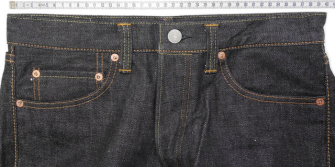
Waist
Lay the jeans on a flat surface and use a tape measure to go side to side. Make sure there is no gap between the rise and back rise. The jeans and tape measure need to be parallel and then multiply by two to get the measurement.
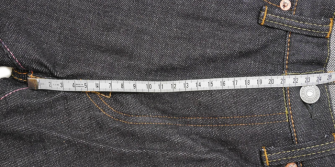
Front Rise
Align the end of your measuring tape with the crotch seam. Hold the denim and measuring tape tight. Measure to the top of the waist line.
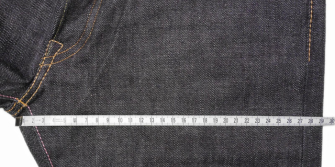
Thighs
Place the end of your measuring tape at the crotch seam. Hold the denim and measuring tape tight, and measure across the leg at a 90° degree angle.
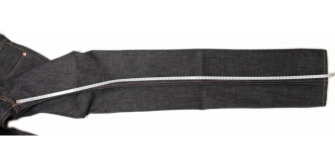
Inseam
Lay the jeans on the ground pull them so that the leg lays flat. Measure from the crotch seam to the leg opening.
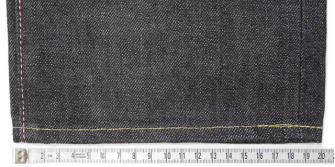
Hem
This one is simple: Just measure straight across the leg opening. Press the denim flat to the ground so that there are no "bumps" in the fabric.
Pants 360 Method
This is what japan brands normally use when measuring jeans and provided by the brands. The difference with the flat method above is how you measure the waist.
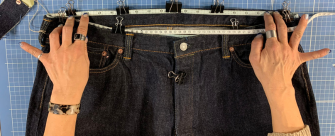

Place the tape inside the waist of the jeans and measure along it. This eliminates any gaps along the outside of the jeans and gives you a perfect waist measurement.
Tops
Measuring a jacket and shirt is less complicated than jeans. However, here is how we do it so that you can compare it with your best fitting top at home.
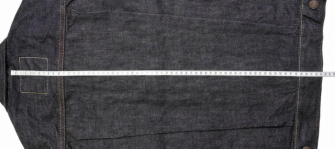
Length
Turn your shirt and jacket with the front to the ground so that you can see the back. Measure from the collar seam to the very bottom of the garment.
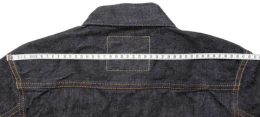
Shoulder
This is important: You have to button or zip the garment, so that is closed before you measure it. Lay it flat to the ground and measure across the shoulders from seam to seam in one straight line.
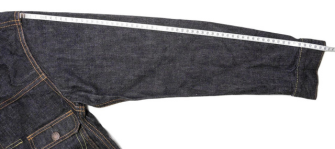
Sleeve Length
Pull the sleeve out and lay flat. Measure from the shoulder seam to the end of the sleeve. Some garments (i.e., raglan sleeves), do not have a seam at the shoulder. In this case, you have to estimate where the should seam would be.
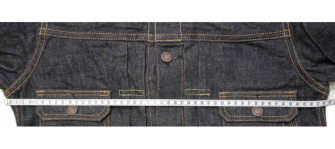
Chest
Lift the arms and pull the fabric tight across the chest (but don't apply too much pressure, otherwise it might look wider than it is). Measure straight across the chest from seam to seam. Multiply by two and you have the final measurements.